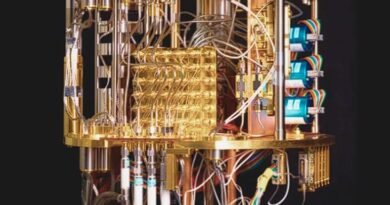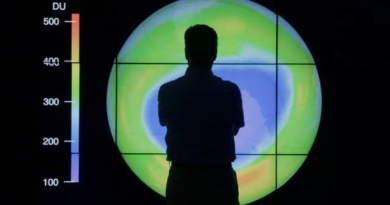NASA Achieves Milestone: Unveils Capsule from Potentially Hazardous Asteroid ‘Bennu,’ Potentially Holding Life’s Origins

NASA scientists have successfully unlocked the canister containing the Bennu asteroid sample after overcoming challenges posed by two stubborn fasteners. This breakthrough, announced on January 11th, is a significant milestone in space exploration. The sample, comprising around 8.8 ounces (250 grams) of space debris collected by the OSIRIS-REx spacecraft, is believed to harbor some of the earliest elements related to life. This marks the first-ever extraction of a space rock by a NASA mission.
Despite having previously accessed 2.5 ounces (70 g) of the sample from the canister’s lid, the impediment posed by the stuck fasteners delayed scientists’ access to the material inside. Months of meticulous efforts paid off when NASA engineers successfully unsealed the container on January 10th, using innovative tools designed specifically for this purpose. Eileen Stansbery, Chief of NASA’s ARES (Astromaterials Research and Exploration Science) division, praised the team’s dedication and innovation, expressing excitement about exploring the remaining treasure within OSIRIS-REx.
The canister was retrieved on September 24th, concluding a seven-year, 4 billion-mile (6.4 billion-kilometer) round trip aboard the OSIRIS-REx capsule. The capsule, which landed safely in the Utah desert, was then transported to the Johnson Space Center in Houston. The delay in accessing the sample was attributed to two out of the 35 fasteners getting stuck, necessitating NASA’s preapproval of tools to prevent contamination. The successful solution involved surgical steel clamp-like tools.
With the container now open, NASA plans to follow “additional disassembly steps” before photographing, extracting, weighing, and processing the remaining sample. Fragments scraped from the lid have already been sent worldwide for analysis, with the contents inside set to undergo the same process. Bennu, classified as a potentially hazardous asteroid with a 1-in-2,700 chance of impacting Earth in 2182, holds significant interest for scientists exploring potential extraterrestrial precursors to life.
NASA Administrator Bill Nelson highlighted the importance of the Bennu sample, describing it as the largest carbon-rich asteroid sample ever returned to Earth. The carbon and water molecules present are crucial elements in understanding the formation of our planet and the origins of life. The sample analysis aims to shed light on the presence of primordial molecules that may have contributed to life on Earth.
Bennu, a B-type asteroid rich in carbon, has the potential to provide insights into the building blocks of life. Previous discoveries on the asteroid Ryugu, including the presence of uracil, a nucleobase for RNA, have heightened expectations for finding similar biological precursors within the Bennu sample.
The OSIRIS-REx mission involved nearly two years of searching for a suitable landing site on Bennu’s rugged surface before successfully collecting the sample. The spacecraft utilized nitrogen bursts to secure its landing and prevent sinking into the asteroid, capturing rocks and dust in the process. Now that the sample has returned to Earth, scientists worldwide are poised to analyze it to unravel the mysteries of our solar system and the origins of life on our planet.








